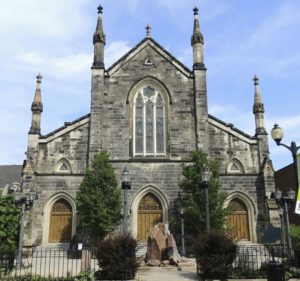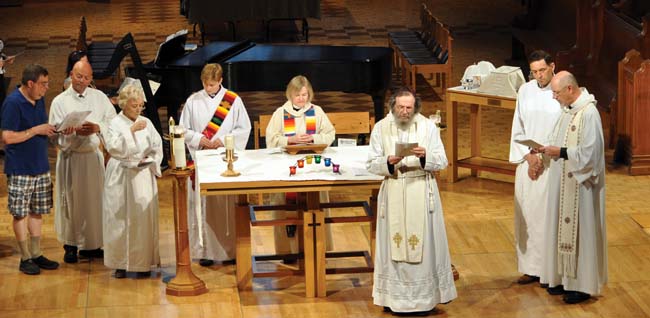Under the cathedral parking lot, apparently.
They were buried in the 19th century and have lain there unmolested ever since. The diocese plans to dig them up to rescue them, as Dean Peter Wall put it, from “asphalt hell.” It has nothing to do with the revenue the diocese will collect from the multimillion dollar condos planned for the land. Nothing at all.
From here:
Nineteenth century records stored in a McMaster University library may bring the Niagara Anglican diocese much closer to identify the remains of hundreds of people buried under Hamilton’s Christ’s Church Cathedral parking lot.
“The church has actually kept very, very detailed records of who was interred in the cemetery like that,” said Myron Groover, a librarian of archives and rare books at McMaster. “And those records all still exist, and in fact, are preserved in multiple copies.”
The bodies, Groover says, were buried from 1832 to 1853. And if the diocese gets its way, the remains be exhumed and identified — all in order to make way for a multi-million dollar condo project.
On Wednesday, the Very Rev. Peter Wall told city councillors the Niagara Anglican diocese would like to identify and remove the bodies, now buried in “asphalt hell,” beneath the parking lot of the James Street North church.


 From
From  To coincide with Vancouver’s Pride Day, Christ Church Cathedral has a “Pride Day service”. It managed to draw 80 people this year – in a facility that will hold 600. So you can see by the numbers it is attracting how successful the Diocese of New Westminster has been in tapping in to the spiritual pulse of the nation.
To coincide with Vancouver’s Pride Day, Christ Church Cathedral has a “Pride Day service”. It managed to draw 80 people this year – in a facility that will hold 600. So you can see by the numbers it is attracting how successful the Diocese of New Westminster has been in tapping in to the spiritual pulse of the nation.